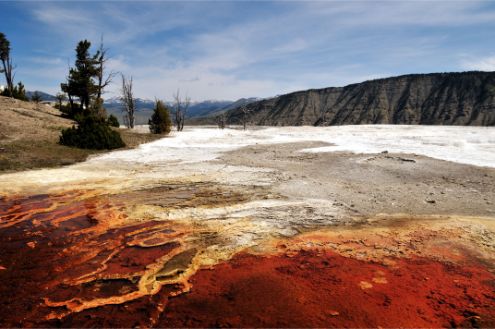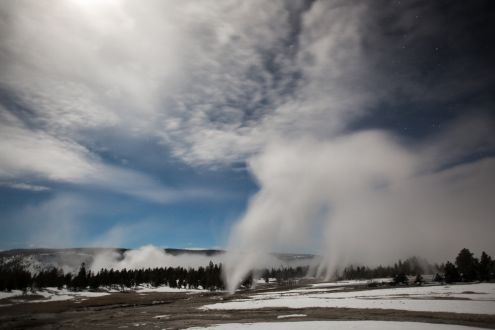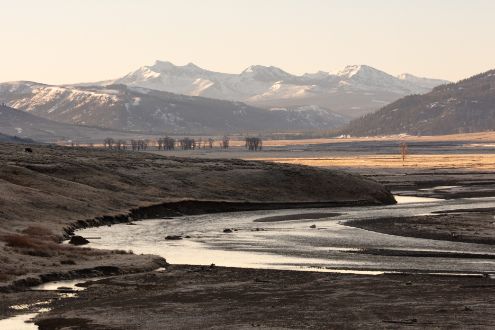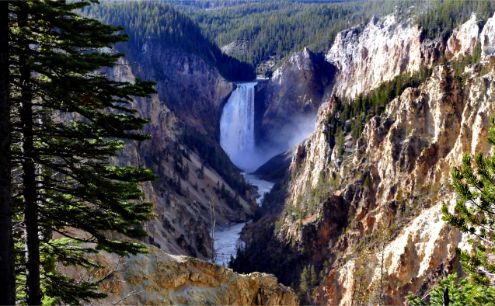Wyoming is a state in the mountain region of the western United States. It’s the 10th largest by area but the least populous. Wyoming is generally thought of as an empty land of windswept plains and sagebrush hills, baking under brooding blue skies - which is a fairly accurate summary. However, you’ll also find some of the country's most dramatic mountains, most diverse wildlife, together with a geology which includes more unique forms than any other state. From the unspoiled Snowy Range near Laramie to the granite wilderness of the Wind River Range behind Lander, the peaks only become more impressive as you travel across Wyoming toward the archetypal - and truly grand - Teton Range. As if that weren’t enough, you’ll also find the famous Yellowstone Park here.
Wyoming’s few towns are steeped in history and infused with pioneer grit. This is Oregon (i.e. westward) trail and outlaw country, and the current inhabitants are content to keep this chunk of the west wild. For a taste of the living past, explore Cody or Laramie, while Jackson and Lander serve as the advanced outposts of the New West revolution.
Mammoth Hot Springs

Image Credit: 小福
The imposing Lower and Upper Terraces of Mammoth Hot Springs are the highlight of the Mammoth region. An hour’s worth of boardwalks wind their way between ornate and graceful limestone pools, ledges and plateaus. Palette Springs and sulphur-yellow Canary Springs are the most beautiful sites, but thermal activity is constantly in flux, so check at the visitor centre for the current state of play.
Upper Geyser Basin

Image Credit: Yellowstone National Park
While Old Faithful gets the most attention, there's lots to explore in Upper Geyser Basin, which has the densest collection of geysers in Yellowstone. On Geyser Hill you'll find the charismatic Anemone and fickle Beehive Geysers. If you see a group of backpack or radio-wielding visitors gathering, hang around, for something impressive is likely to happen. The fantastic Castle Geyser is one of the largest formations of its kind in the world, and the view from Daisy Geyser is excellent.
Buffalo Bill Center of the West

Image Credit: Cyndi and Dave
Don’t miss Wyoming's most impressive man-made attraction, a sprawling complex of five museums showcasing everything Western, from the spectacle of Buffalo Bill's world-famous Wild West shows and galleries featuring powerful frontier-orientated artwork, to the visually absorbing Plains Indian Museum and a collection of 7,000 firearms. Meanwhile, the Draper Museum of Natural History explores the Yellowstone region's ecosystem.
Grand Prismatic Spring

Image Credit: terkel110
At 370ft wide and 121ft deep, Grand Prismatic Spring is the park’s largest and deepest hot spring. It’s also considered by many to be the most beautiful thermal feature in the park. The spring drains into Excelsior Pool, a huge former geyser that blew itself into oblivion in the 1880s with massive 300ft explosions of water. The last eruptions here were in 1985, when the pool erupted almost continuously for 46 hours before subsiding. The pool continually discharges 4000 gallons of boiling water a minute into the Firehole River.
For the most dramatic photos of Grand Prismatic Spring, drive south to Fairy Falls trailhead and walk for 1 mile to the new overhead platform on the hillside.
Lamar Valley

Image Credit: Yellowstone National Park
Of Lamar Valley's abundant wildlife, the most famous - and to some, controversial - resident is the grey wolf. Wolves were missing from the ecosystem between 1926, when the last pack was killed, and 1995, when 31 Canadian wolves were reintroduced to the park. The population has stabilized at around 100, but continual pressure from lobbying groups has seen the species move on and off protected lists. Outside the park, it is currently legal to hunt wolves in Montana and Idaho but not Wyoming.
Re-introducing a top predator to the ecosystem provides an unprecedented look at how species are interconnected, and scientists have been watching closely. As wolf numbers have increased, coyotes have decreased (wolves kill them but don't eat them), meaning small mammals and rodents have rebounded – good for birds of prey. Grizzly bears consistently steal fresh kills from wolves, which provides them with another food source during lean times. Some attribute an increase in willow growth to a decrease in elk in the wake of the wolves' re-introduction. Visitor numbers have increased in this remote corner of the park as people stare intently into the hills, hoping to catch a glimpse of these magnificent animals.
Canyon Visitor Education Center

Image Credit: Bernard Spragg. NZ
This major center is well worth a visit for its innovative and interactive displays on Yellowstone’s geology. The highlight is a room-sized relief model of the park, which will help you visualize the terrain of your upcoming hike. Twenty-minute movies play on the hour and half-hour, and there are afternoon ranger talks for children.
Upstairs there's a sobering map of earthquakes that happened that day in the park (an average of 2000 each year, most of them in the Norris basin), scratchy black-and-white videos of Old Faithful through the years and a computer animation that details the annual bison migration through the parks.
Title Image Credit: Christian Collins (Image Cropped)